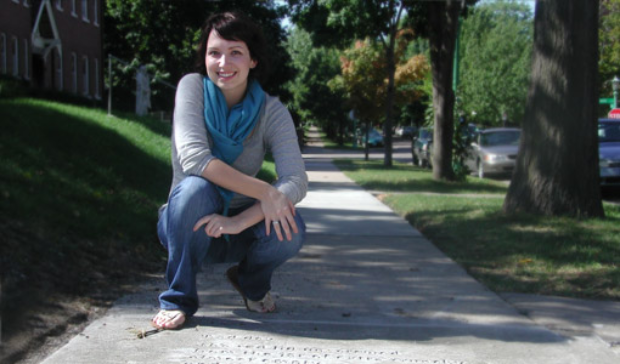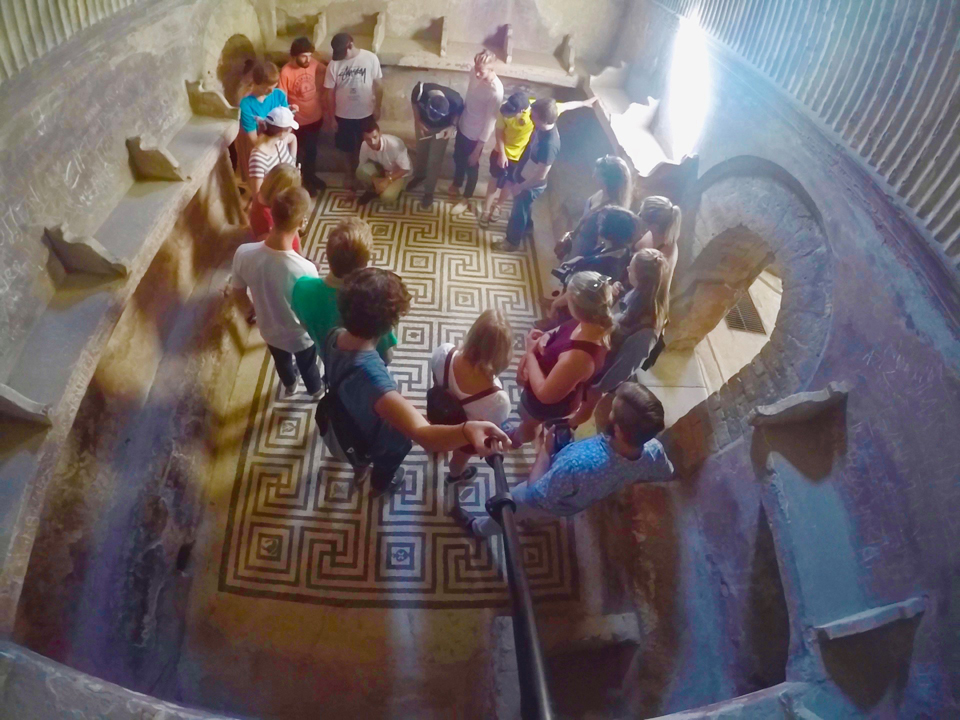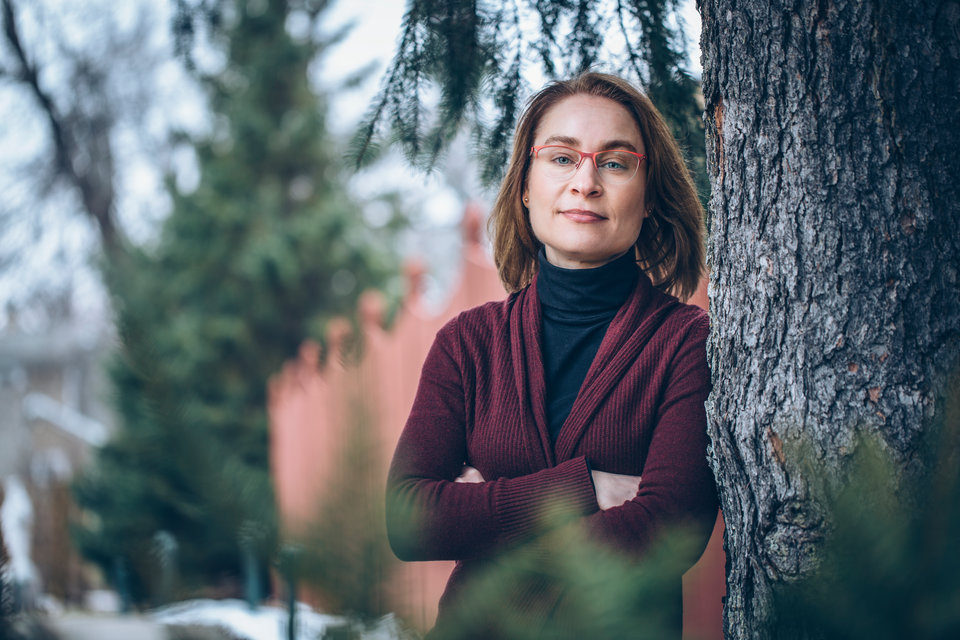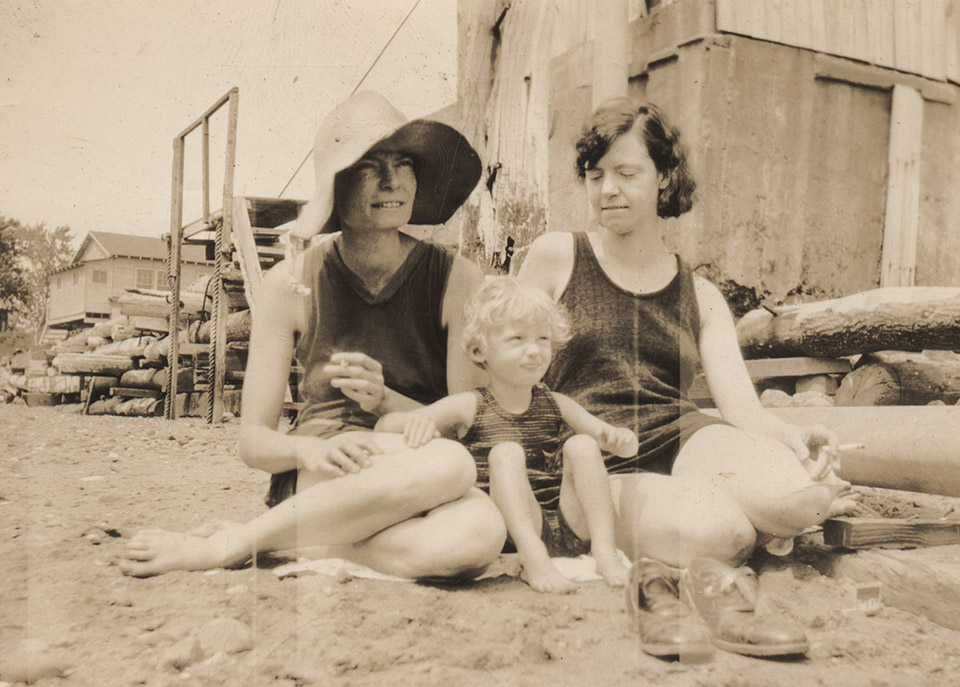Caley Conney, an alumna who majored in English and minored in criminal justice and Catholic Studies, is one of St. Paul's "sidewalk poets." Her poem, "Bad Day," was one of the 20 poems chosen among 2,000 submissions to be stamped into city sidewalks. Everyday Poems for City Sidewalks is a project created by the St. Paul Artist in Residence, St. Paul Public Works and Public Art St. Paul.
In the photo above, Conney appears with her poem located on the south side of Dayton Avenue near the Church of St. Mark. To learn more about the project, visit https://everydaysidewalk.org.
Bad Day
The red line unscrewed
from the jar of extra crunchy
almost empty
and the full, mounded spoon
half shoved in my mouth
says it all
-I don't want to talk-
Caley Conney
What is the inspiration for this poem?
It's a silly little poem. It's very different from what I usually write, but it's still so me. I had to write a poem for Dr. Alexis Easley’s English class and I had no idea what to write. I was sitting on the couch eating peanut butter right out of the jar and I remembered Dr. Easley had suggested that I write about my having difficulty writing the poem.
The longest poem I’ve written was about a patient dying from the perspective of being in the back of an ambulance. I worked as an EMT for four years. I loved it. Most people don’t realize that you are let into parts of a person’s life that no one else sees. It’s a very interesting window into humanity. That’s why I was a pre-med student when I came to St. Thomas.
Why did you submit the poem to the Everyday Poems for City Sidewalks project?
My mom made me do it. She said, “I really think you should enter this. I will pay your entrance fee if you submit a poem.” I submitted three poems. The other two poems were more deep and meaningful! I threw the winning poem in just for something different.
What did you want to be when you grew up?
I wanted to be a weather person. In kindergarten, we made a weather wheel with an arrow that spun around a circle pointing to rain, sunshine, etc. It was on our refrigerator. After supper, I would stand in front of the fridge and use a small strainer as my microphone and tell my family what the weather was going to be. I still check the weather compulsively.
What is one of your favorite books from childhood?
My grandmother read all of the Laura Ingalls Wilder books to me as a child and then I read all of them later by myself.
What’s your favorite book?
My favorite novel is Frankenstein by Mary Shelley. She was about 19 when she wrote it. The book started as a contest. She and her husband were at a party and they decided everyone should write a scary story but Mary’s was more psychologically scary than the others. I like it because it’s not a refined piece; it’s raw.
My favorite poet is Denise Levertov and I love her poetry collection, The Stream and the Sapphire. It’s not often that you hear a fresh take on Christianity. She makes me look at things in a different way.
Do you like writing poetry?
I love to write. It’s not really an option. I’ve always kept journals. Everyone in my family is a bookworm. And, I had my own personal librarian! When I was a kid, I had Carol at the Dakota County Library. She’d drop what she was doing when I came in and have a pile of books for me to read.
What kinds of things do you like to write about?
Everyday things. Things you might miss if you’re not looking and then you realize the significance and beauty of them.
Where do you work?
I’m an associate development officer at the University of Minnesota Foundation. I didn’t look for traditional writing jobs when I graduated, but so much of what I do in nonprofits involves writing that it still feels like a “writing job.” Nonprofits and foundations have wonderful stories about the generosity of donors. Often those stories go untold, but I have the opportunity in my job to put a face to those giving and receiving gifts.
What are your plans?
My dream is to get a Master of Fine Arts in creative writing. Right now, I’m more career-focused.
Read more from CAS Spotlight




